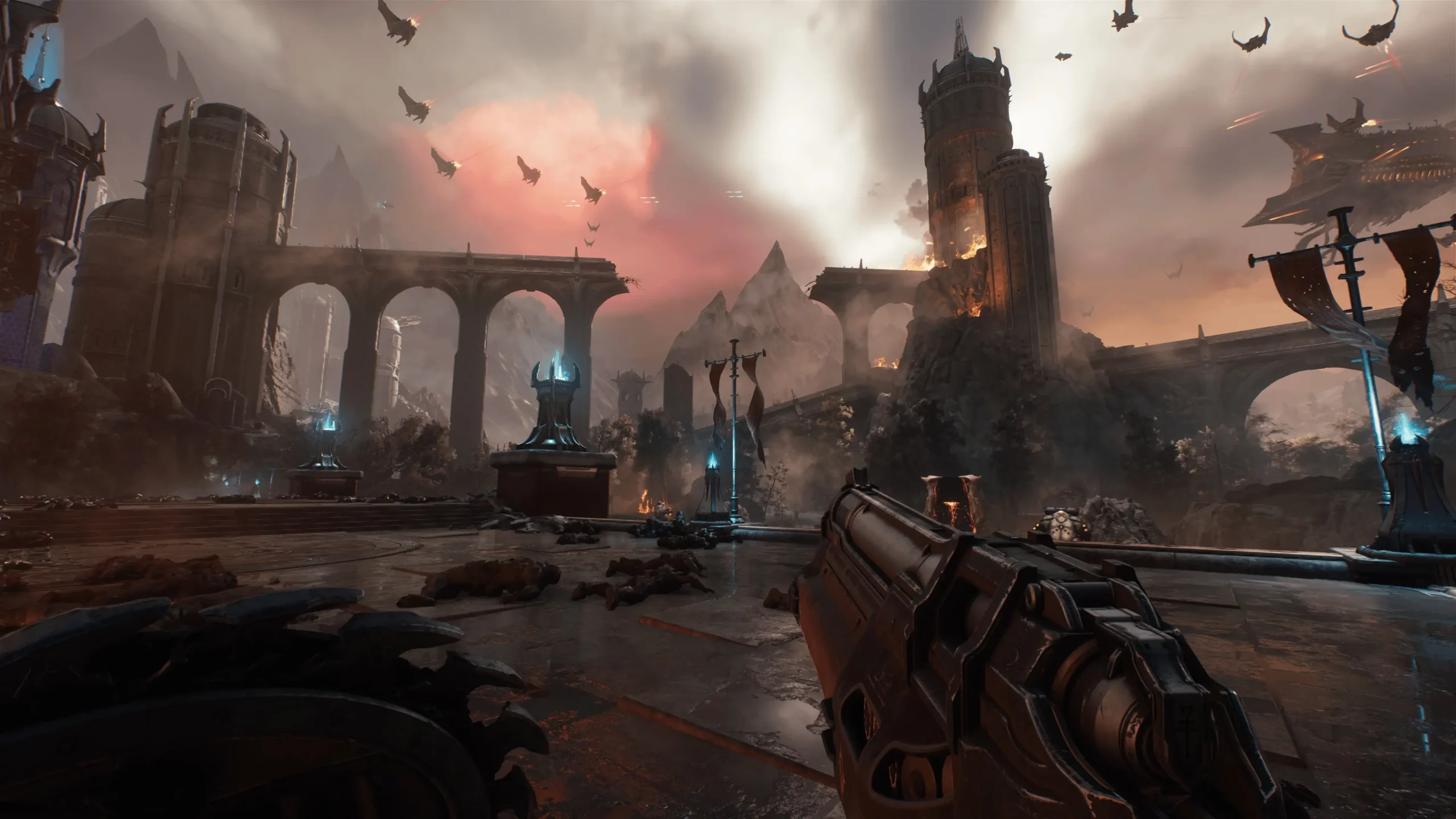Over the years, Doom has redefined the first-person shooter genre time and time again—from its fast-paced origins to its eerie horror phase and the modern reboot of relentless demon-slaying. Each chapter brought something distinct, but Doom: The Dark Ages stands out for boldly reshaping the experience yet again. Gone are the breakneck movements of Doom Eternal; in their place is a grounded, gritty approach to combat and world-building.
At first, the game’s shift may feel disorienting. Movement is heavier, aerial mobility is absent, and enemies come at you in massive waves across open fields. Yet, within a few hours, the new mechanics begin to shine. As the campaign progresses, your arsenal grows and the layers of strategy deepen, eventually transforming the chaos into one of the most satisfying combat systems the series has offered.
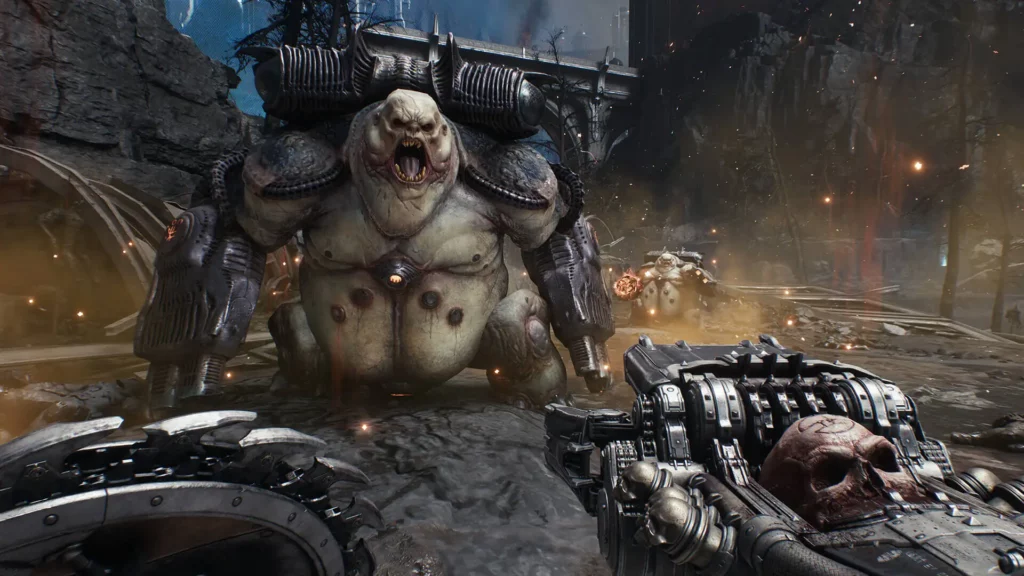
Setting the Stage: Ancient Lore and Cosmic Horror
This latest installment is a prequel to the modern Doom timeline, showing the Doom Slayer’s journey before his awakening in the UAC facility. While he remains a stoic, unstoppable force with little character development, The Dark Ages expands the universe around him. It focuses on the long-standing war between humankind and demonic forces, adding meaningful narrative context to the bloodshed.
The campaign explores the rise of the Sentinels, the enigmatic Maykrs, and the larger mythology of the Doom universe. Instead of being a lone crusader, the Slayer often fights alongside human allies, making the battles feel like part of a greater conflict. Locations range from corrupted medieval fortresses to mind-bending Lovecraftian realms filled with puzzles and alien horror, marking the richest and most atmospheric setting in Doom history.
Shield Combat Changes Everything
One of the boldest additions in The Dark Ages is the introduction of the Doom Slayer’s shield, which fundamentally changes how combat is approached. Instead of dodging nonstop or leaping over projectiles, players are now encouraged to confront danger head-on.
The shield can block powerful attacks or reflect incoming projectiles with perfectly timed parries. Red attacks can be absorbed up to the shield’s limit, while green ones can be deflected, stunning enemies and dealing massive damage. Timing is generous on default settings but fully adjustable for those seeking tighter challenges or a more punishing experience.
In addition to blocking, the shield offers a high-speed bash attack used to charge into or escape from combat—think of it as a universal replacement for the grappling hook in Doom Eternal, but available across all weapons and with a faster cooldown. This keeps the pace thrilling without relying on complex mobility tricks. Despite the Slayer’s bulkier feel, this new style of movement retains intensity and even enhances immersion with thundering footsteps and impactful landings.
The Shield as a Weapon
The shield’s role doesn’t stop at defense. As the campaign unfolds, players unlock the ability to throw it like a deadly boomerang. When aimed at crowds, it decapitates groups of demons in one sweep. Against larger foes, it latches on like a buzzsaw, grinding away and interrupting attacks.
This proves especially effective against fast-moving enemies such as the Arachnotron. If unarmored, a well-placed shield toss can neutralize their barrage of bullets, allowing you to close in and finish them off with a shotgun blast. This versatility elevates the shield into one of the game’s standout features.
Tactical Depth Without Overcomplication
Unlike Doom Eternal, which relied on constant weapon switching and specific counters for each demon type, The Dark Ages leans into flexibility. Enemies still have weaknesses, but they’re less reliant on individual guns. Instead of needing a precise grenade to stun a Cacodemon or a specific sequence to defeat a Marauder, here you’re encouraged to experiment and approach encounters your way.
This doesn’t mean the challenge disappears. Enemies still hit hard, and you’ll face overwhelming numbers. But the design removes the need for StarCraft-level APM (actions per minute), letting you focus on moment-to-moment decisions rather than memorizing counter-loadouts. It makes the chaos more manageable without dulling the excitement.
Iconic Foes Return with Twisted Designs
Many of the franchise’s most iconic monsters return, including Imps, Hell Knights, Arachnotrons, Mancubi, and even the towering Cyberdemon. However, the designs have been updated to fit the new dark fantasy aesthetic. One standout is the Pinkie demon, now reimagined as a four-legged beast carrying an archer-like demon rider. There’s also a new cosmic version of the Cacodemon, brimming with otherworldly menace.
One surprise is the return of the Vagary, a boss last seen in Doom 3, now redesigned as a mini-boss in this reimagined universe. These visual and behavioral changes enhance the sense of discovery, even for players familiar with every demon in the series.
Massive Battles, Massive Spectacle
Combat zones are larger and more dynamic than ever. Entire fields fill with demonic hordes, creating a sense of apocalyptic scale. Early on, this can be overwhelming—enemies often attack from all directions, and rear ambushes can feel unfair. But once players adapt, using the shield to escape or reposition becomes second nature.
These battles feel more like full-on wars than arena skirmishes. It’s a natural evolution for the series and one that suits its new mythological tone perfectly.
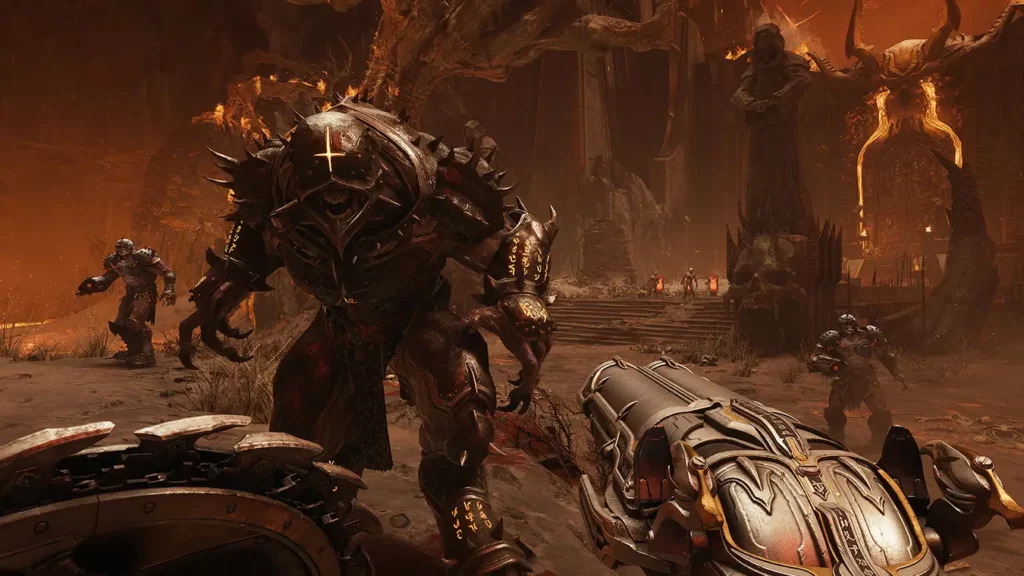
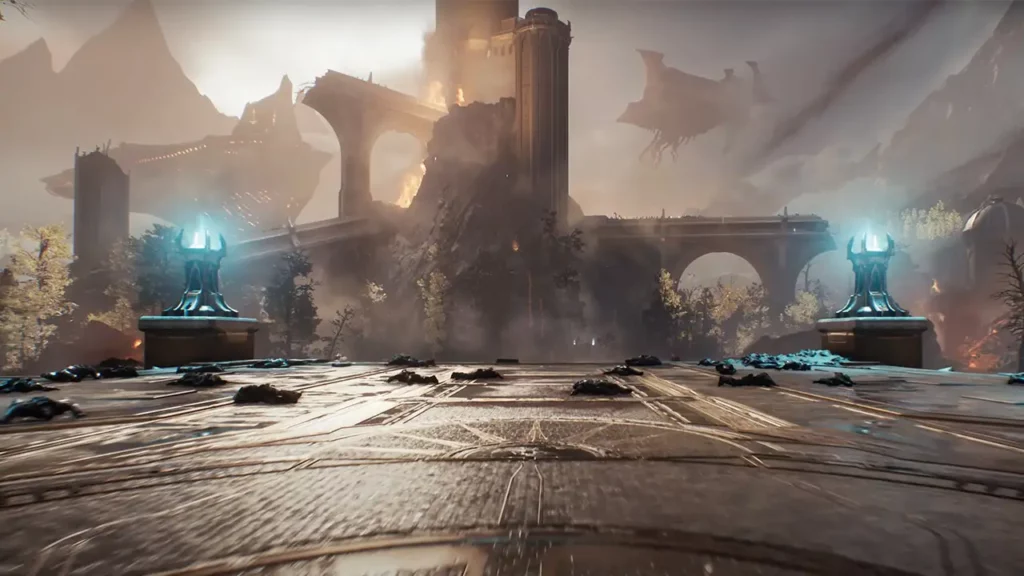
Goodbye Chainsaw, Hello Melee
One major change is the removal of the Chainsaw, which had been a staple since the 2016 reboot. In its place is a melee system that rewards aggression by letting players brawl enemies to death while restoring ammo. The effect is more fluid than the previous system, as you’re no longer bound by limited fuel pickups. Instead, melee resources are more plentiful, allowing for more consistent use of the ability.
While it lacks the visceral crunch of the Chainsaw, this change fits the new vision of the Doom Slayer—a relentless juggernaut who doesn’t pause, doesn’t wait, and never backs down.
Old Weapons, New Twists
Despite the thematic overhaul, many of Doom’s beloved weapons return—just with medieval-inspired redesigns. The combat and super shotguns are still devastatingly effective. The assault rifle fires rail-like spikes instead of bullets, while the plasma rifle remains a reliable mid-range tool.
A standout addition is the Skullcrusher Pulverizer, a wide-spread weapon similar to the chaingun. It’s perfect for thinning out massive groups, although the shield throw often proves more efficient. The most interesting change to the weapon system is the introduction of ammo-sharing “sister” guns. Each weapon type has a counterpart—like a rocket launcher with an alternative grenade launcher—encouraging situational switches without overwhelming the player.
This design adds variety while keeping gameplay streamlined. Even early-game guns remain viable thanks to the upgrade system. For example, a basic shotgun can be enhanced to make enemies drop armor, while other upgrades might spawn health or increase ricochet damage.
Constant Rewards and Exploration
The campaign smartly spaces out upgrades, abilities, and gear. New mechanics are introduced steadily, ensuring the gameplay never becomes stale. With each level, you might earn a new weapon, shield enhancement, or a melee upgrade that redefines your combat flow.
The game also rewards exploration. Hidden collectibles, weapon skins, lore entries, and upgrade currency are scattered throughout massive levels. The environments range from sprawling warzones to intricately designed castles, and each offers unique vistas and secrets that make exploration genuinely rewarding.
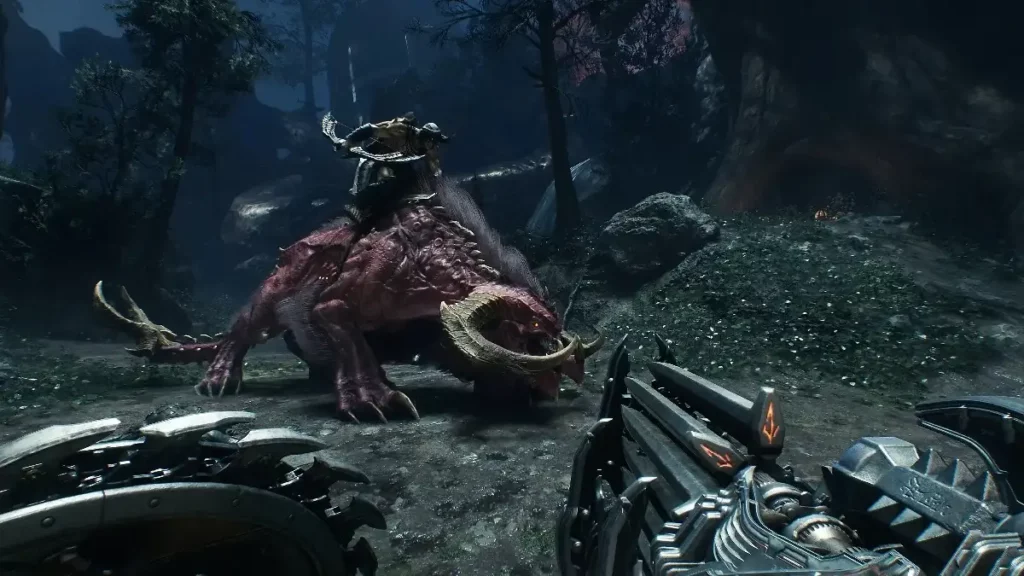
Giant Mechs and Fire-Breathing Dragons
Breaking up the traditional gameplay are segments where players control either a massive mech or the Slayer’s personal dragon. Yes, the Doom Slayer rides a dragon—and yes, it breathes fire. These sections are less about deep mechanics and more about providing cinematic spectacle and pacing variety.
While not as intricate as the core combat, these sequences are short enough to avoid dragging and offer a fun break from the intensity of regular firefights. Their inclusion feels more like icing on the cake than a core feature, but they serve their purpose well.
A Soundtrack Forged in Hellfire
It wouldn’t be a Doom game without a heart-pounding metal soundtrack, and The Dark Ages delivers in full force. The music amplifies every moment—from quiet tension to full-blown carnage—and stands out as one of the franchise’s best compositions.
At times, the music is so good you may find yourself replaying levels just to hear it more clearly. Turning down all other sounds and letting the guitars and drums roar is an experience in itself.
Final Verdict: A Triumphant, Tactical Rebirth
Far from being just another Doom sequel, The Dark Ages boldly reshapes the franchise. Its heavier movement, expanded storytelling, and revolutionary shield mechanics combine to offer a distinctive experience that still honors the series’ core identity.
This is a Doom game that trades acrobatics for raw power, and constant mobility for strategic positioning. It’s still brutally fast, gloriously violent, and deeply satisfying—but now with a new flavor that gives every moment weight. Backed by outstanding level design, a relentless soundtrack, and the best weapon variety the series has seen, The Dark Ages proves that innovation doesn’t mean losing what made the franchise iconic.
